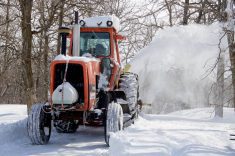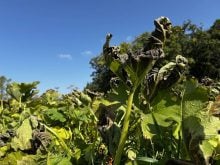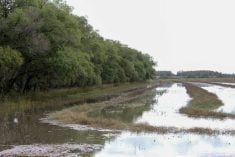Looking back at my coverage in 2021, there are a few words that keep cropping up. “Grim” is one of them. So is “dire.”
There were other contenders: “critical,” “parched,” “scrambling.” In short, this year had me spending a certain amount of time with my thesaurus. How many ways can you say that things are dry?
Drought wasn’t, of course, the only thing to happen in 2021. There was the fact that we were all stuck in the second year of a pandemic. In a bit of bright news, the second half of the year saw the first real return of in-person events.
Read Also

Manitoba Ag Days 2026: Local businesses gear up for Brandon farm show
Most of agriculture is seemingly at Manitoba Ag Days each January: Manitoba agribusinesses and farm groups look forward to connecting with farmers at the 2026 show.
Like any good year as an ag reporter, there were also analysis features that expanded my horizons — weeks where I got to dive into farm bioplastics or hemp genetics or (most recently) urban development and culture clash in expanding municipalities.
But it is hard to deny that drought was the defining story of the year.
Covering the 2021 drought felt a bit like fighting a mythological hydra. For every impact you covered, two more seemed to emerge.
There was, of course, the impact to the livestock sector. There, the unease started early, with winter precipitation reports that obviously fell short of what dugouts would need for spring. But, the industry hoped, there was still lots of year left. A few months later, it had become obvious that pastures and hayfields were not growing as they should, and that optimism was noticeably more dim.
From the first late and lacklustre hay reports, to pastures that were brown already in July, to prime breeding stock being sold away because the farmer couldn’t feed them, it was easy to sense the sector’s escalating tone of anxiety.
Readers will likely remember Manitoba’s Interlake making headlines in papers like the New York Times in midsummer, or when a list of municipalities announced states of agricultural disaster, or when AgriRecovery was triggered in the latter part of 2021. The agriculture sector was in crisis, and it was perfectly obvious by the strain I heard in the voices I interviewed during the drought’s peak.
Grain producers were also worried, despite some of the highest grain prices in recent memory. There were stories on a tough spray season, on poor germination, on ravaging grasshoppers and flea beetles, on contract issues rooted in poor crops. Under drought conditions, agronomists were suddenly noticing things they’d never seen before: the province’s first soybean cyst nematode symptoms, mystery nodulation issues in peas or October canola in full bloom after the taps finally turned on in August.
Of all my stories between the start of May and end of August, almost two-thirds involved drought in some way.
Even then though, there were stories of hope and resilience. There was a charity hay auction, or efforts to connect grain farmers with the livestock operations that needed their marginal crops. There was palpable relief in August when rains led to a wave of regrowth, and when winter held off long enough for good extended grazing.
Looking ahead, there is still obvious uncertainty. Feed supply will have a lot to do with how harsh the winter is in the next few months, and whether livestock producers can, at last, have a better turnout next spring.
Ultimately, it’s not yet clear if the province will buck the dry trend it’s been caught in now for years. That may have come to a head this year, but the cumulative effects of that trend were certainly felt even before 2021. As with every year in agriculture, we’ll have to see what comes.
















